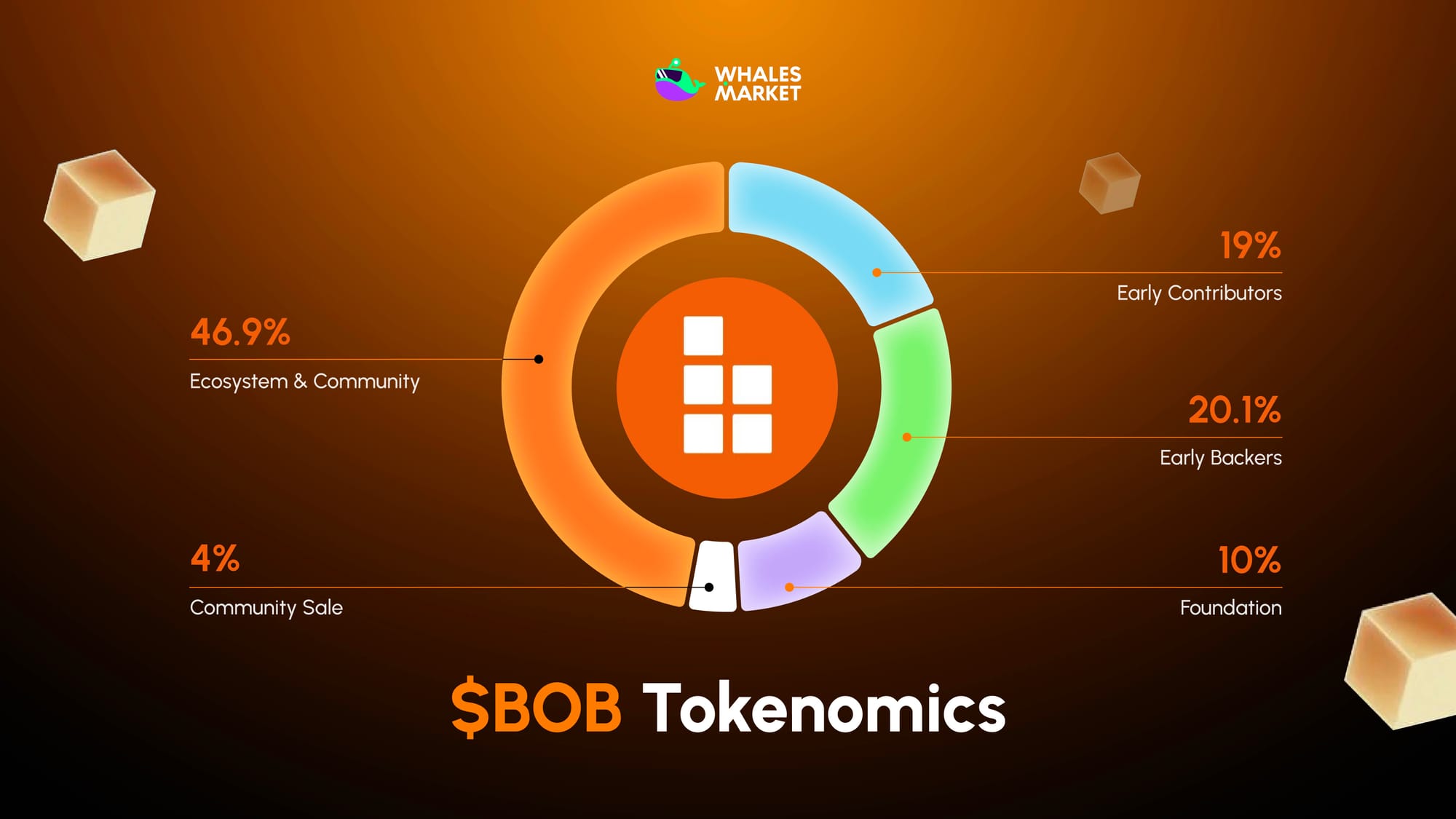Bitcoin network is highly secure and decentralized, but it doesn’t support smart contracts. Because of this, its ecosystem has grown slowly, and BTC has mostly been used as a store of value and an inflation hedge.
BOB was created to address this limitation in a similar way to how Layer 2 solutions on Ethereum leverage the base layer’s decentralization and security.
What is BOB
BOB (Build on Bitcoin) is a Bitcoin Layer 2 stack that is fully compatible with the EVM. The project combines the power and security of Bitcoin with the scalability, programmability, and user experience of Ethereum.
At its core, BOB is an Optimistic rollup built on the Ethereum framework but deeply integrated with the Bitcoin network. This architecture allows users to leverage native BTC without wrapping it, so they can earn yield, swap assets, and interact with DeFi protocols that are directly anchored to Bitcoin’s proof-of-work security.
Key Features of BOB
BOB stands out because it connects the two leading blockchains in a complementary way. Some key features include:
- Hybrid chain with Bitcoin security: BOB uses hybrid ZK fault proofs (a hybrid ZK and optimistic rollup model) to provide fast transaction speed and low costs, while all transactions are protected by billions of USD worth of staked BTC.
- Native BTC via BitVM: BitVM enables native BTC to be used in the system without relying on trusted third parties. Users can stake BTC, earn yield from dApps such as Uniswap or Euler, and withdraw back to native Bitcoin with fast operations.
- BOB Gateway - multi-chain bridge: Through the Gateway SDK, BOB connects Bitcoin to more than 11 major chains such as Ethereum, Base, and BNB Chain. Users can swap BTC to assets on these chains and vice versa, using Bitcoin intents and LayerZero to streamline the process.
How does BOB work
BOB is formed and coordinated by several main components:
- Rollup layer: At the base level, BOB can interact with all EVM chains and rollups. Initially, BOB will be developed on the OP Stack, including improvements that incorporate ZK technology. In addition, BOB will inherit Bitcoin’s security through a merged mining protocol.
- EVM core: BOB uses the Ethereum Virtual Machine (EVM) to create and execute smart contracts. The EVM implementation on BOB is designed to be highly compatible with the tools and infrastructure that Ethereum developers are already using.
- Rust zkVM: Most components in the Bitcoin stack, from SDKs and Lightning to Ordinals, are written in Rust. BOB is therefore built to support Bitcoin libraries written in Rust. With the integration of the RISC Zero zkVM, BOB can execute Rust programs off-chain and then verify their behavior inside EVM smart contracts using zero-knowledge proofs.
- Bitcoin bridge: Through a BTC light client, BOB can access Bitcoin block and transaction data. This allows EVM contracts on BOB to read and process BTC transactions.
- BOB SDK: BOB provides an SDK that is powerful enough to build applications on Bitcoin. Solidity contracts can interact with Bitcoin-related features such as Ordinals, BRC-20, Lightning, and Inscription APIs.

$BOB Token Information
$BOB Key Metrics
- Token Name: BOB Token
- Ticker: $BOB
- Token Type: Governance and utility
- Total Supply: $10B BOB
- Contract Address (CA): TBA
$BOB Token Use Case
No official token use cases have been announced yet. Further details will be updated once BOB publishes them.
$BOB Token Listing
- Listing time: TBA
- Confirmed CEX listings: TBA
- Pre-market price (Whales Market): TBA
$BOB Tokenomics and Fundraising
Tokenomics
Total Supply: $10B BOB
Allocation:
- Ecosystem and Community: 46.9%
- Early Backers: 20.1%
- Early Contributors: 19%
- Foundation: 10%
- Community Sale: 4%

Fundraising
According to CryptoRank, BOB has raised $29M from many prominent investors such as CMS Holdings, IOSG Ventures, and Amber Group.
BOB Roadmap and Team
Roadmap
BOB has a clear roadmap, focusing on expanding BitVM and DeFi:
- 2024: Completed seed round ($10M from Castle Island Ventures and investors such as Mechanism Capital), launched testnet and Gateway SDK, and formed partnerships with Ledger and Coinbase Ventures.
- Q1- Q3 2025: Completed strategic round ($9.5M from CMS Holdings and Zee Prime), launched the mainnet of the hybrid chain, integrated LayerZero, and onboarded initial dApps such as Solv and OpenUSDT.
- Q4 2025: Mainnet launch of the BitVM bridge, a key milestone for fully native BTC. Partnership with Anchorage Digital to attract institutional users, with expected TVL growth to the billions of USD.
- 2026 and beyond: Expand BitVM and acc, support additional chains, and conduct ICO and KOL sale.
Team
- Alexei Zamyatin: Co-Founder and CEO
- Dominik Harz: Co-Founder and CTO
Conclusion
Through this article, readers can gain an overview of what BOB is. Leveraging Bitcoin’s security and decentralization has been discussed for many years, and BOB is one of the pioneers actively exploring this direction.
FAQs
Q1. Why does Bitcoin need a Layer 2 like BOB?
Bitcoin’s base layer prioritizes security and decentralization, so it cannot support smart contracts. BOB enables programmability while still relying on Bitcoin’s security.
Q2. How does BOB use native BTC without wrapping?
BOB integrates BitVM and a BTC light client, allowing native BTC to be deposited, used in DeFi, and withdrawn without trusted intermediaries.
Q3. What makes BOB different from other Bitcoin Layer 2 solutions?
BOB is fully EVM-compatible, supports Rust-based tooling, connects to more than 11 chains, and uses a hybrid ZK and optimistic proof system.
Q4. Can developers build Ethereum-style applications on BOB?
Yes. Because BOB uses the EVM, developers can deploy Solidity smart contracts and integrate them with Bitcoin-based assets and data.
Q5. Does BOB have a confirmed token utility model?
The project has not announced official utilities for the $BOB token yet, and details will be released once the team confirms them.
Q6: What is the price of $BOB today?
$BOB does not yet have an official market price since it has not been listed.

